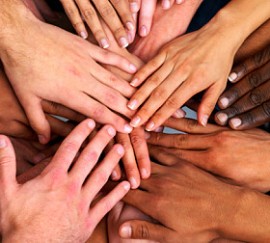
I have written about how a new world can emerge from this global crisis–how more kindness, compassion, awareness, consciousness, and love can be expressed in the world. And our country and our world is also seeing the opposite of that. Systemic racism with its violence and marginalization has always been sadly clear to BIPOC. During this time of great change, it is becoming more visible. Angela Davis has called this a time of “collective epiphany” in working to dismantle systemic racism.
The new normal has required new ways of doing things. For me, in currently being off the hamster wheel, it is a time, as a person with white skin, to self-educate about implicit bias, equity, equality and antiracism.
It is also a time of simplifying–looking at the things that I thought I needed and doing without (easier than I thought). I’m finding a new normal with more time to be a support (even if it is just to make a phone call to check in on someone, letting them know I’m thinking of them), or discover creative ways to listen, express support, solidarity, and love–online or through writing. There is time to cook food at home, look at inventive ways to use resources, conserve, read, write, pray, meditate, examine what is really important in my life, say, “I love you,” and do self-care to keep myself healthy. Within the new normal is an emerging of awareness of what needs to change for a new love-based world.
When things eventually (and, hopefully, safely) start opening up again in the world, I don’t want to go back to the old normal. During this time there is a huge opportunity to work on creating a new world. The old normal was a world where people were so focused on the hamster wheel that there wasn’t the time being allowed for really listening, caring, loving, and expressing gratitude. In examining the old world, for the most part, the dominant white culture was/is focused on individualism, performance, and on consuming and consumerism. What was the newest thing to buy, to have, to experience? The old “business as usual” was and is broken. The gap is wider than it has ever been between the “haves” and those who are marginalized, the “have nots.” Too many times love took a backseat to the bottom line.
When things gradually and safely start opening up, let’s create a new normal–awareness of what equity and equality really is, in caring, in learning, in listening, in serving, in sharing, and in giving. Together we can get through this pandemic and create a new world, a better humanity. There is a choice in front of each of us. I’m choosing creating a new normal, a new world in which love, equality, compassion, kindness, and generosity flow freely . What about you?
© Copyright 2020, Mary Claire O’Neal
Mary Claire O’Neal author of the award-winning book, Becoming What You Want to See in the World
Expanded Green Edition and unabridged audio book, riverbirchpublishing.com









You must be logged in to post a comment.